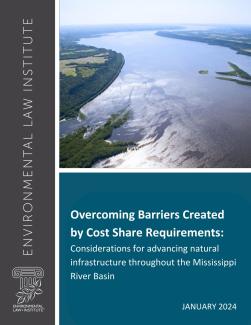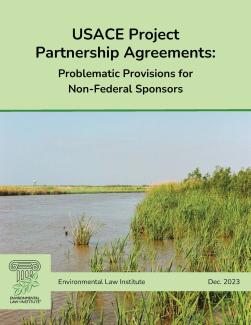The storms that saturated California in January made apparent in the state’s lower half once again how impractical it is to have major human activities in the desert. Subject to either drought or deluge, most of the Southwest is not a setting for a sustainable large metropolis or for intensive industrial agriculture, yet it supports a huge population and serves as America’s vegetable garden.
According to Michael Kimmelman in the New York Times Magazine, Los Angeles, the country’s second-largest city, no longer gets much of its drinking water from its namesake river, which is channelized for most of its brief 51 miles in length. The project is the Army Corps of Engineers’ biggest undertaking west of the Mississippi. The concrete lining installed by the Corps is designed to safely discharge stormwater to the Pacific, to avoid flooding the city when winter rains are severe, as they were in 2023.
A once-in-a-century rain event, however, would top its artificial embankments, flooding out as many residents as were inundated by Hurricane Katrina in New Orleans in 2005. The lowlands where the river used to overflow are now inhabited by the poor of Los Angeles, including tens of thousands of Latino people and the Chinatown community. The concrete straightjacket transports water past their neighborhoods while fencing out residents who want to use the river for fishing and recreation. Instead there are industrial zones and of course freeways, a dystopian scene used as the stage for the giant radioactive ant creatures in the Hollywood science fiction classic Them.
According to the magazine, with some limited exceptions there seems no practical alternative at this point to the channelization without a huge effect on the population in the floodplain, despite the wish of some environmentalists who want to restore the river to its natural course. Conceding the inevitable, architect Frank Gehry designed a series of parks and pavilions on concrete cantilevers over the concrete channel, allowing the river to function as a storm drain while providing amenities like fields and civic centers. The concept, which has become a part of the city’s new master plan for the stream, has seen pushback from riverfront communities who fear gentrification.
Today, Los Angeles’ drinking needs are met by aqueducts from wetter climates and a large share of the water from the Colorado River, which additionally supports several other large desert cities that are growing faster than water resources can keep up. On top of meeting the drinking needs of 40 million people, the Colorado also irrigates California’s Imperial Valley farmland.
Its watershed in drought for 22 years, with consumption growing, the Colorado is struggling to keep up with growing demand. At the Hoover and Glen Canyon dams, two of the Bureau of Reclamation’s crown jewels, the levels of impounded water have fallen hundreds of feet, endangering not only needed flow levels for downstream users but also the electrical hydropower generation that supports their desert communities.
Writes Christopher Flavelle in the New York Times, “The crisis over the Colorado River is the latest example of how climate change is overwhelming the foundations of American life, . . . including the legal underpinnings that have made those systems work.” Seven states share the river’s water, but rights are also held by tribes and Mexico, and all these rights are then apportioned to cities and to agricultural districts based in large part on the seniority of use.
Flavelle’s conclusion is that the century-old system of allocation “is facing off against a competing philosophy that says, as the climate changes, water cuts should be apportioned based on what’s practical.” In sum, “The outcome of that dispute will shape the future of the southwestern United States.”
The seven states are the key parties in the conflict. They are operating under a compact made in 1922. When it was signed, according to ProPublica, annual river flows were 18 million acre-feet. That proved a desert mirage—levels began to decline well before the effects of global warming. But the change in the climate means “in recent years, it has trickled at times with as little as 8.5. All the while the Lower Basin deliveries have remained roughly the same,” as required under the compact. The Lower Basin supplies water to the Southwest’s population centers and the majority of its irrigated acreage.
The states have met their growth in demand during a steep decline in flow by some conservation measures, but not enough—instead, they are overdrawing the water banked behind the two huge concrete dams. But the bill for inaction has come due.
The states were ordered by the Bureau of Reclamation to make voluntary cuts in annual allotments by January 31. Failing that, the bureau would apportion shares, an unprecedented act justified by unprecedented times. At press time, the deadline had passed with no resolution in sight. California, the largest user, and owner of the most senior rights, refused to join the other six states in voluntary reductions. Meanwhile, the bureau has $4 billion in drought mitigation funding from the Inflation Reduction Act passed last year. Clearly some of that can be used to implement conservation measures.
The Los Angeles River and the Colorado River are today artificial watercourses operating in a natural world that doesn’t respect planners and policymakers who attempt to control nature without understanding the often unwelcome results to the environment and the society it supports.
—Stephen R. Dujack
Cool Beans
What would we get done without coffee? Obviously, there are an enlightened few who are able to get through a work shift or household tasks without a cup of joe. But in the United States, even if you do manage to stave off caffeine’s lure, the people and culture around you may just lasso you right back in. “What happens if you go a day without coffee?” I once asked a friend who chugs four to five espressos a day. “I don’t,” he responded, shuddering with horror at the notion. And it makes perfect sense. Nowadays, there’s so many opportunities to snag some brew that not doing so feels counterculture.
Case in point: I’m writing this while sipping my daily morning cup of coffee, which I made with my coffee-maker. If I didn’t have a coffee-maker, I could just go to one of three different coffee shops down the road. Inexplicably, all three are Starbucks, and one of them is inside a grocery store, just in case you didn’t notice the first two Starbucks. In Washington state (where I live) and other parts of the West, you can even find small coffee stands inside parking lots. And finally, there’s my favorite cultural mainstay: “Let’s grab coffee sometime!”
But like all types of consumption, our coffee drinking habits add up to hefty environmental impacts. In 2017, NRDC research on food waste habits of households in Denver, Nashville, and New York City found that coffee, including liquid coffee and grounds, was the number one category of food discarded in all three cities. To reach those households, coffee beans first need to be grown, transported, roasted, ground, packed, and shipped once again—all processes that produce greenhouse gas emissions. Researchers at University College London report that, “Weight for weight, coffee produced by the least sustainable means generates as much carbon dioxide as cheese and has a carbon footprint only half that of one of the worst offenders—beef.”
At the same time, climate change will likely hinder coffee production around the world. In a 2014 study published in Climatic Change appropriately titled “A bitter cup,” researchers found that under one potential emissions scenario developed by the Intergovernmental Panel on Climate Change— called RCP 6.0—the area of land suitable for growing the most common species of coffee will reduce by 50 percent by 2050. Studies have also shown that rising temperatures could increase pests and fungal infection for coffee.
Already, coffee growers and governments are adapting. In 2014, the complete genome sequence for arabica, the species that makes up 70 percent of global coffee production, was released into the public domain in an effort to hasten breeding of new climate-resistant plant varieties. The organization World Coffee Research hosts a global coffee breeding network to accelerate these adaptation efforts.
With luck and hard work, new plant varieties will hopefully outpace a heating planet. But as with all climate impacts, adaptation means little without first addressing the roots of the problem.
—Akielly Hu
Notice & Comment is the editors’ column and represents the signatory’s views.
Gov. DeSantis Calls Natural Florida the State’s “Lifeblood”
A week into his second term, Republican Florida Governor Ron DeSantis signed an executive order [January 10] reaffirming and building on a commitment to clean water he had signed exactly four years earlier.
Like in 2019, the order addresses issues that have plagued the state, such as red tide and blue-green algae blooms, as well as the yearslong effort to restore the Everglades. It orders the Department of Environmental Protection and regional water management districts to make those issues a priority and pledges $3.5 billion for water projects over the next four years.
“I said four years ago and then I reiterated that last Tuesday, we need to leave Florida to God better than we found it,” DeSantis said at a news conference.
The governor said making a commitment to the environment not only is the right thing to do, but also helps drive the state’s tourism.
Tourists “want to go to the beaches, they want to go fishing, they want to go boating,” DeSantis said. “That’s just the lifeblood of our state’s DNA.” —Greenwire
The Consumer Product Safety Commission revealed [in January] that it’s weighing restrictions on gas stoves, while California is on track to become the first state to ban the sale of new gas furnaces and appliances. . . . . The momentum against natural gas in the home is clear. —Washington Post






